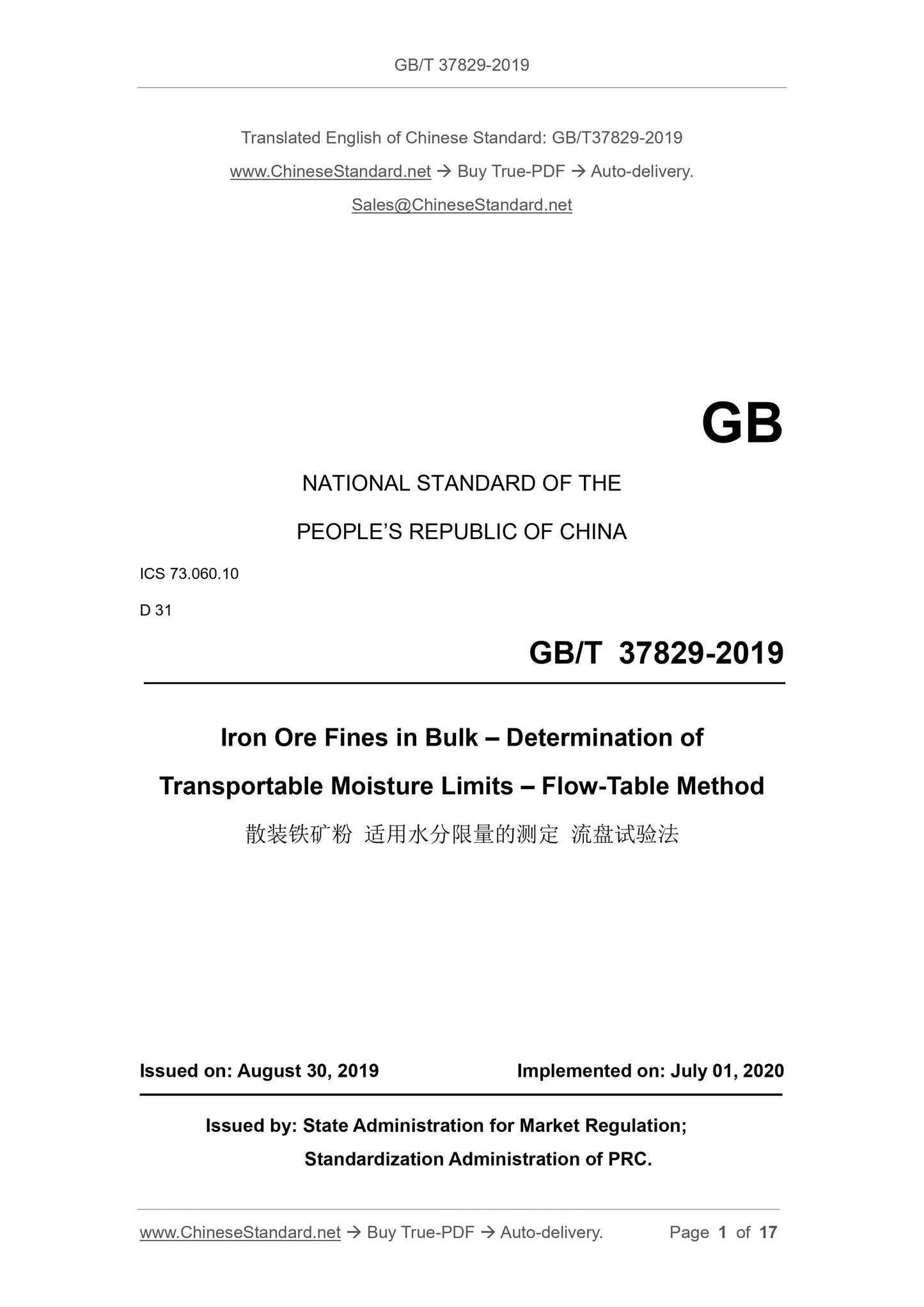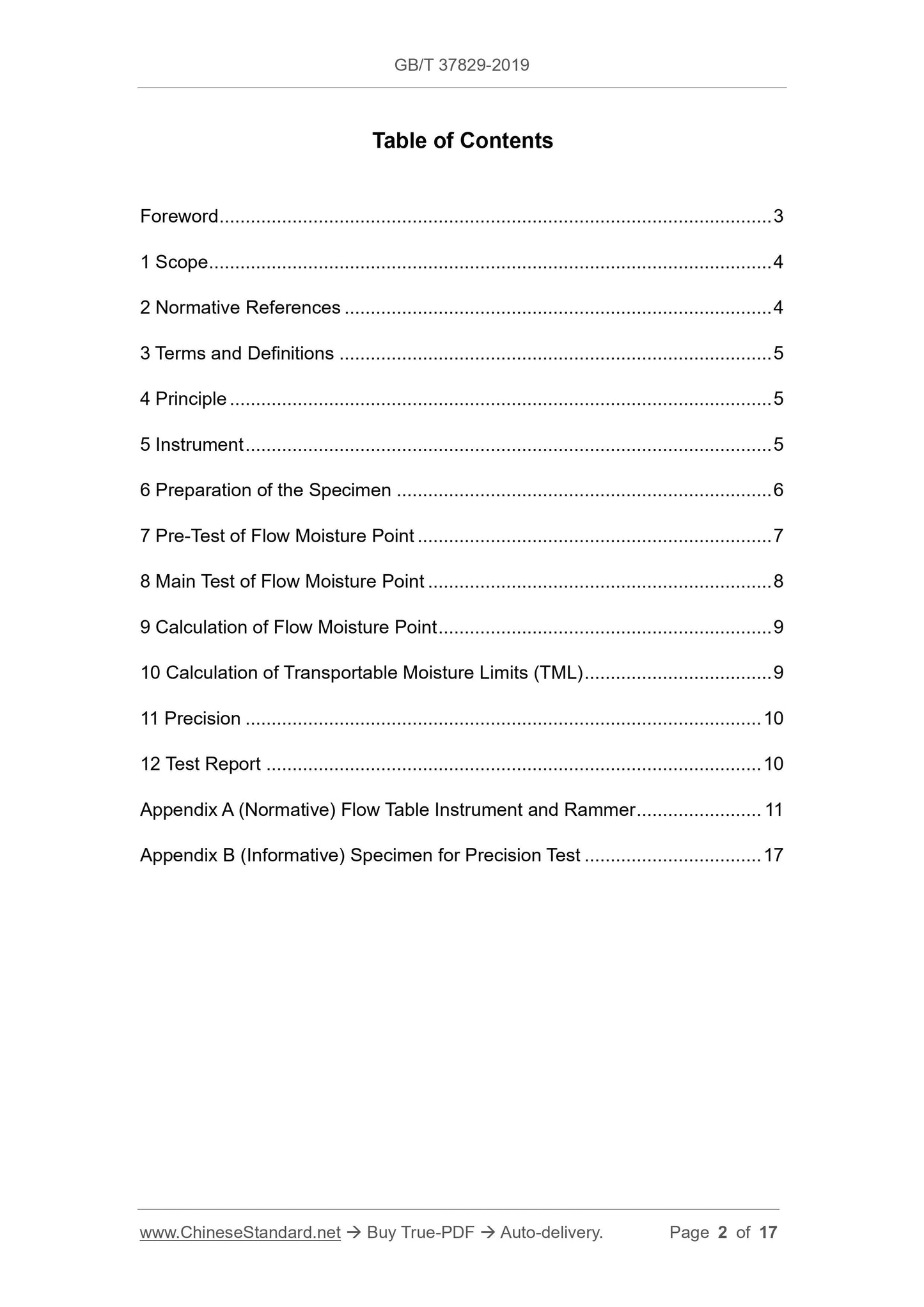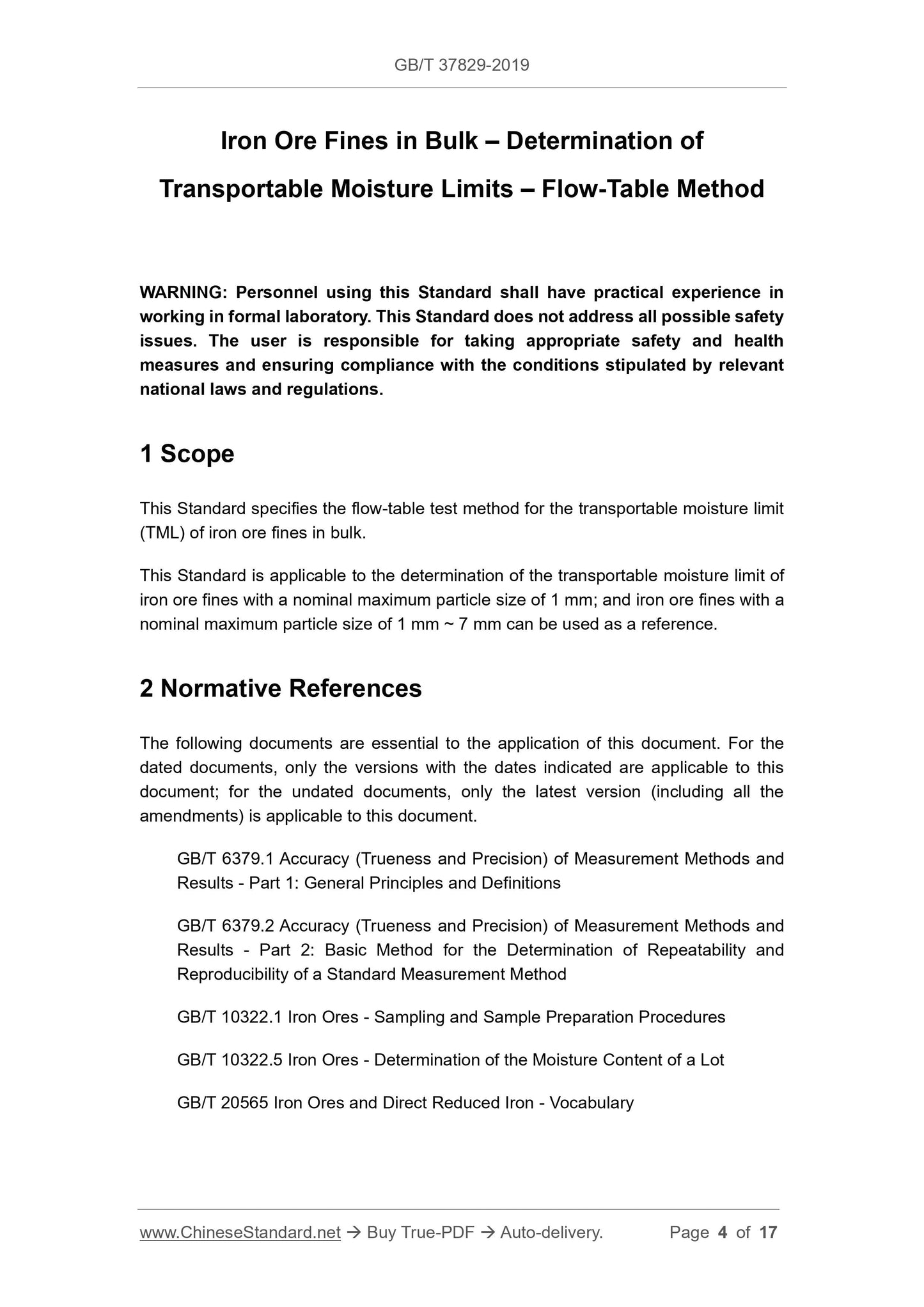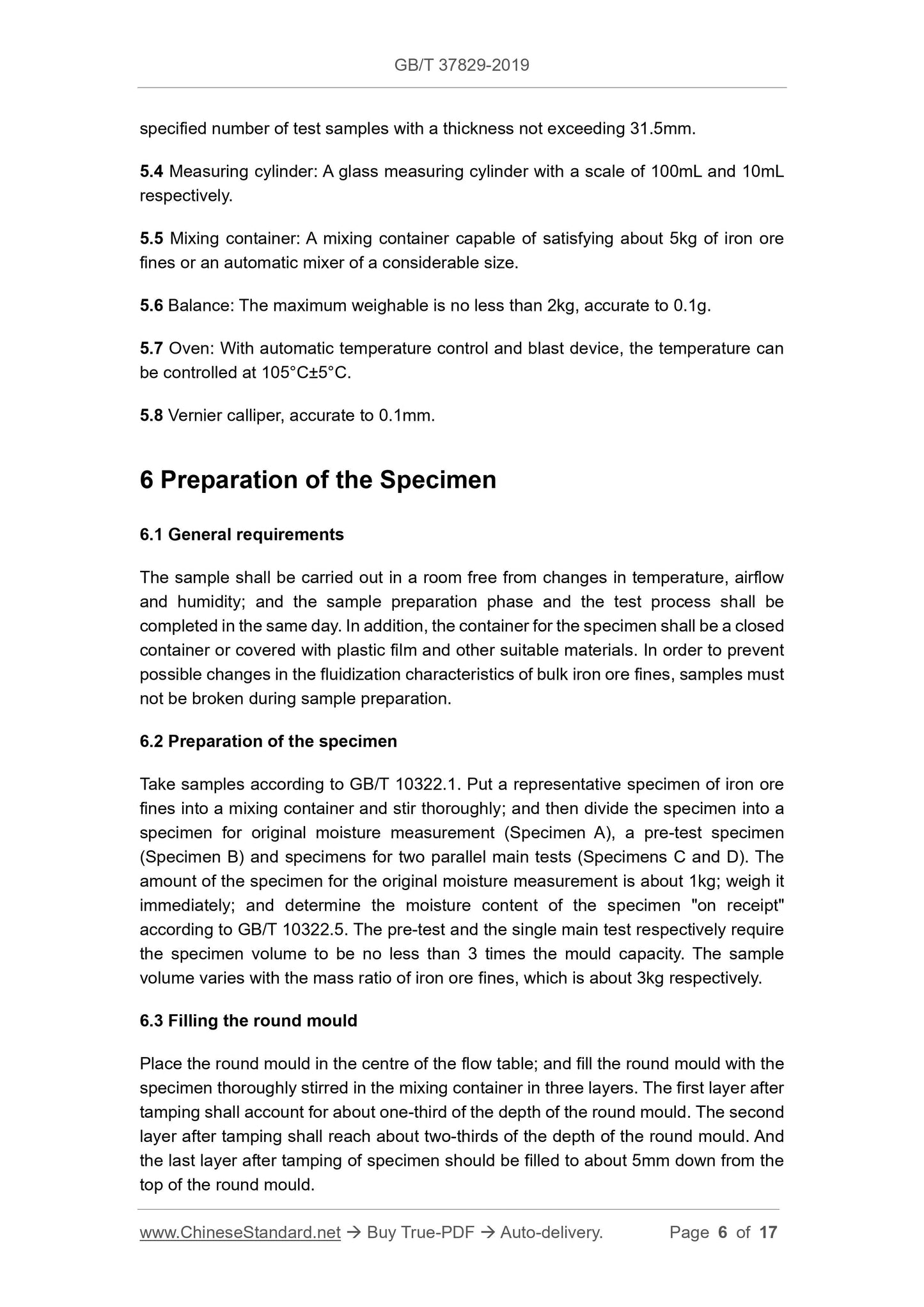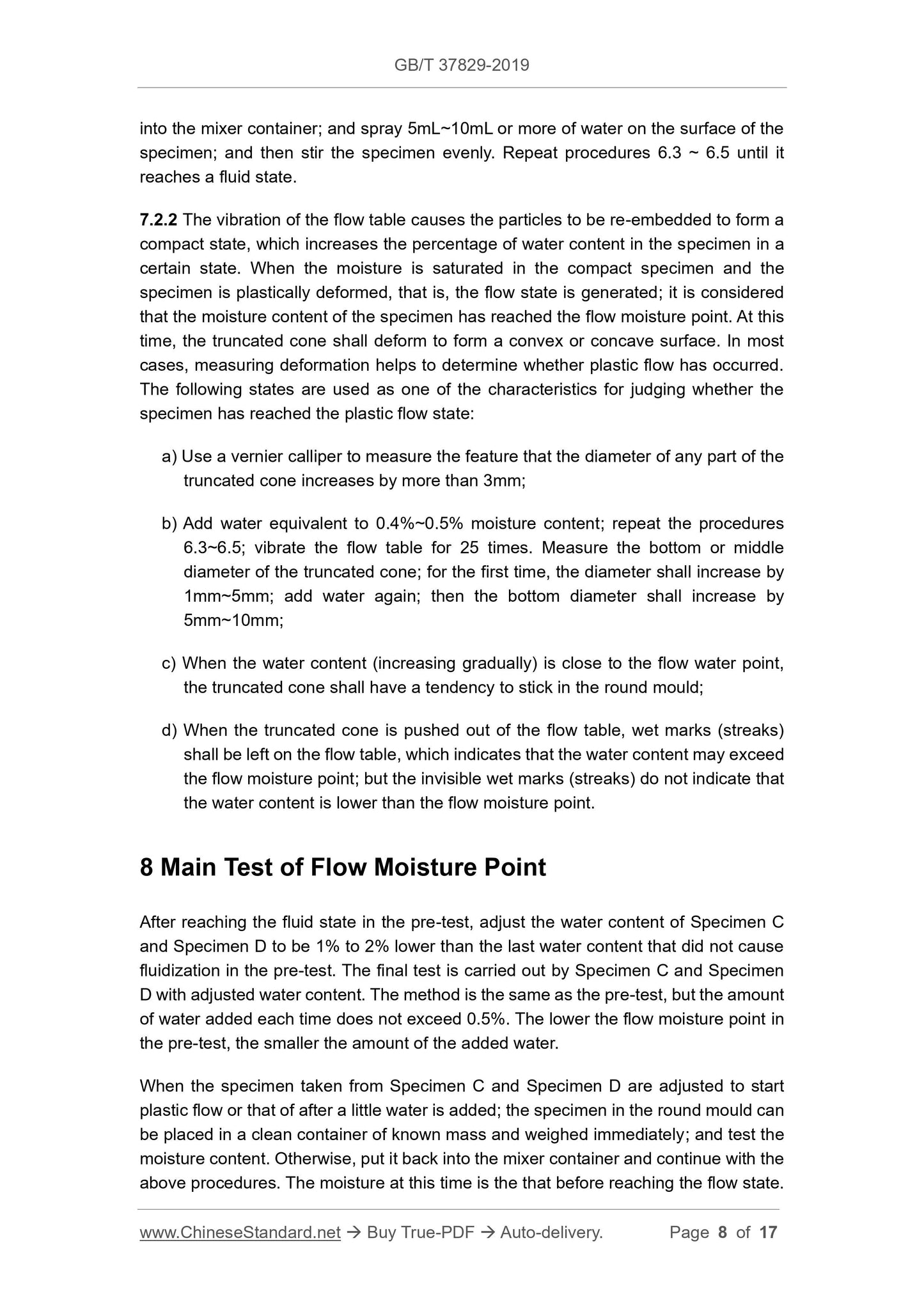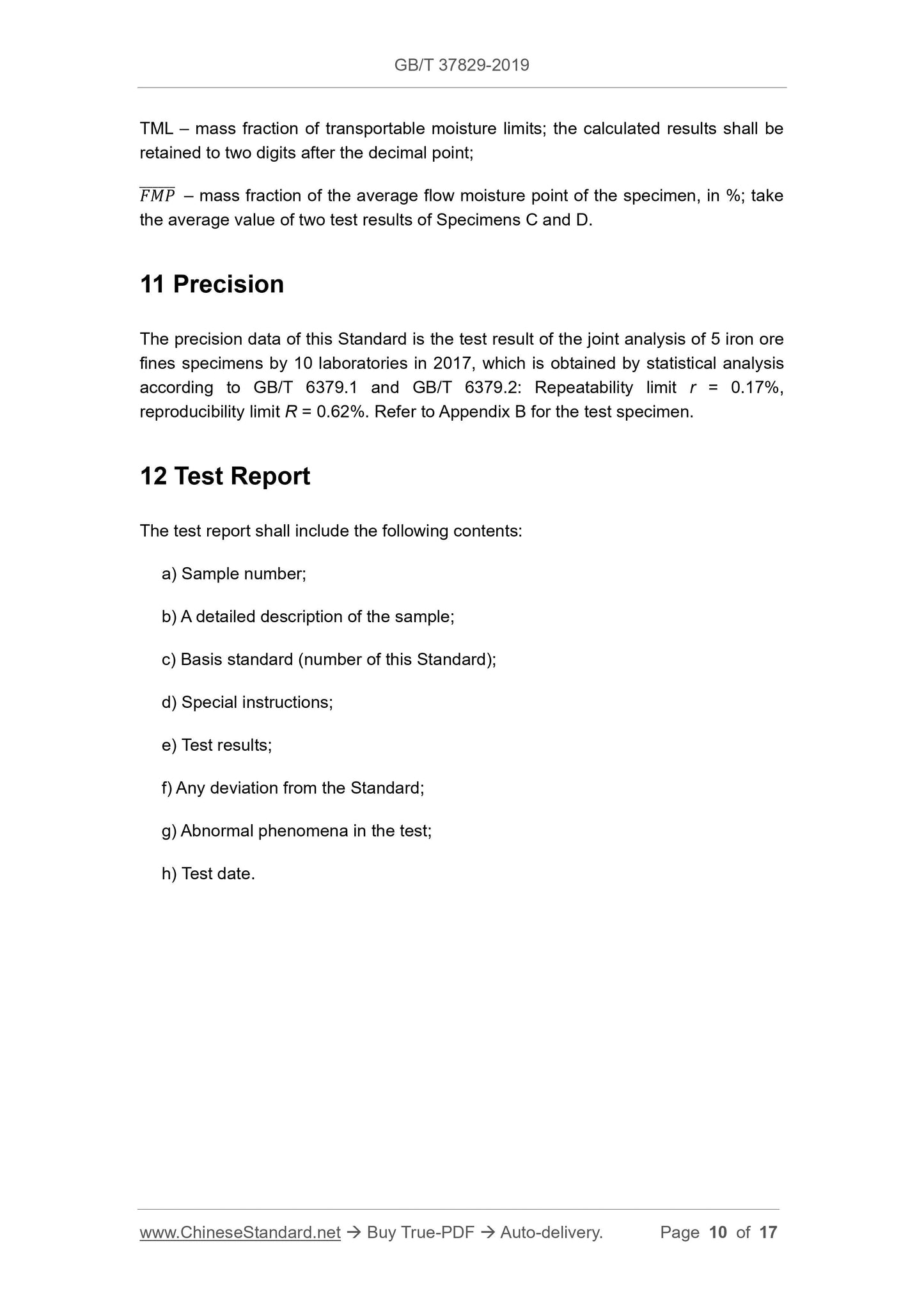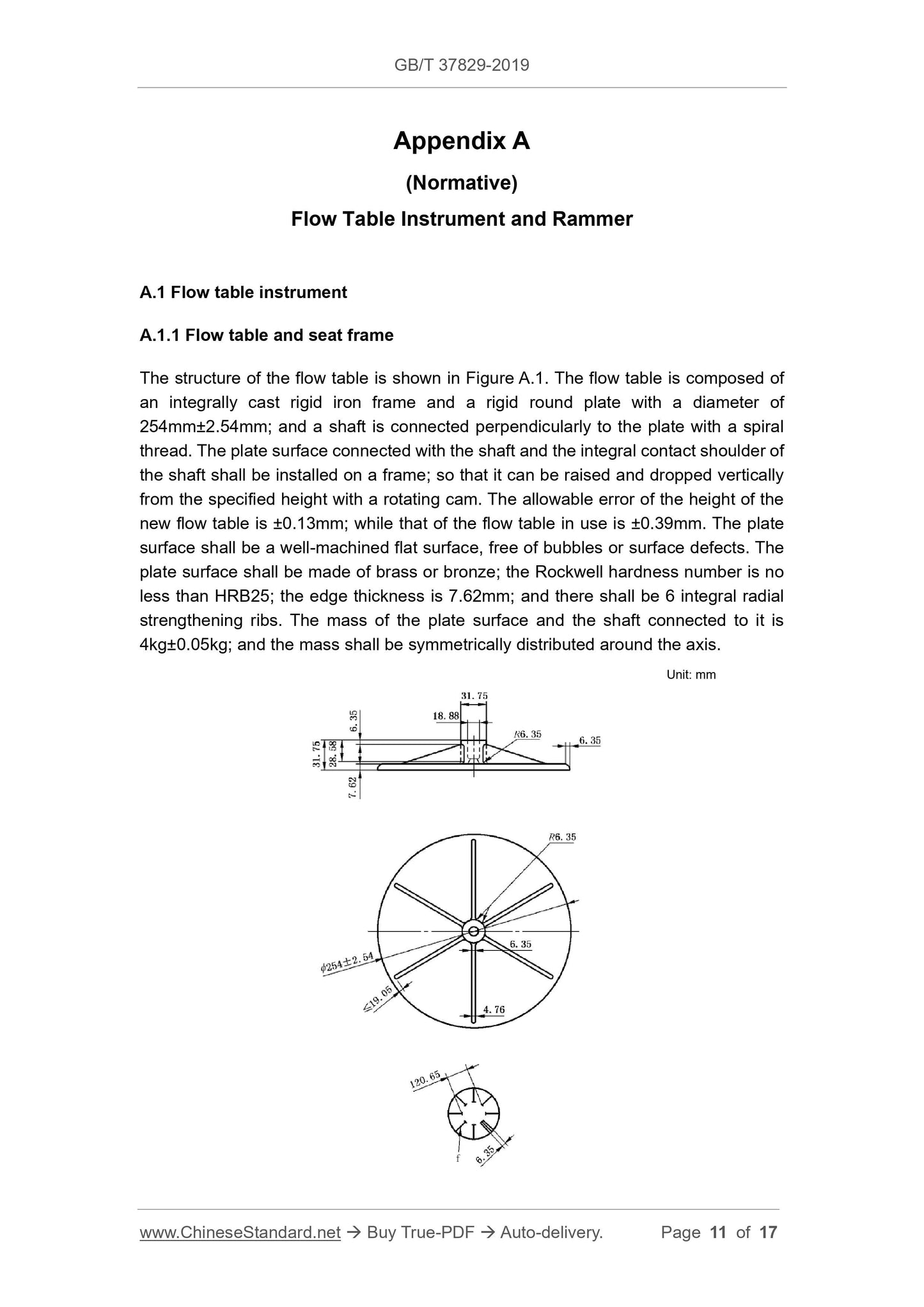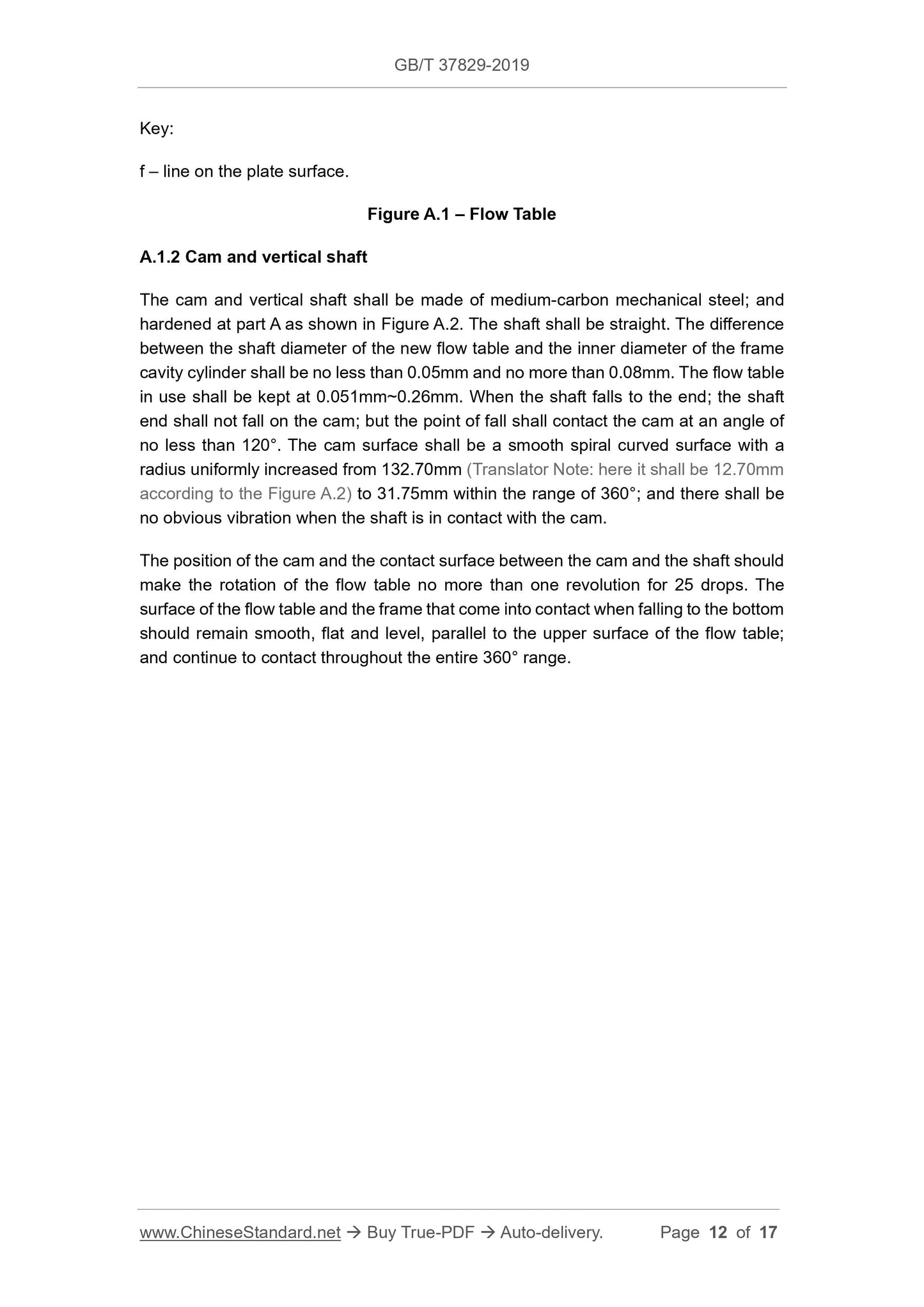1
/
of
8
www.ChineseStandard.us -- Field Test Asia Pte. Ltd.
GB/T 37829-2019 English PDF (GB/T37829-2019)
GB/T 37829-2019 English PDF (GB/T37829-2019)
Regular price
$230.00
Regular price
Sale price
$230.00
Unit price
/
per
Shipping calculated at checkout.
Couldn't load pickup availability
GB/T 37829-2019: Iron ore fines in bulk - Determination of transportable moisture limits - Flow-table method
Delivery: 9 seconds. Download (and Email) true-PDF + Invoice.Get Quotation: Click GB/T 37829-2019 (Self-service in 1-minute)
Newer / historical versions: GB/T 37829-2019
Preview True-PDF
Scope
This Standard specifies the flow-table test method for the transportable moisture limit(TML) of iron ore fines in bulk.
This Standard is applicable to the determination of the transportable moisture limit of
iron ore fines with a nominal maximum particle size of 1 mm; and iron ore fines with a
nominal maximum particle size of 1 mm ~ 7 mm can be used as a reference.
Basic Data
| Standard ID | GB/T 37829-2019 (GB/T37829-2019) |
| Description (Translated English) | Iron ore fines in bulk - Determination of transportable moisture limits - Flow-table method |
| Sector / Industry | National Standard (Recommended) |
| Classification of Chinese Standard | D31 |
| Classification of International Standard | 73.060.10 |
| Word Count Estimation | 14,153 |
| Date of Issue | 2019-08-30 |
| Date of Implementation | 2020-07-01 |
| Issuing agency(ies) | State Administration for Market Regulation, China National Standardization Administration |
Share
